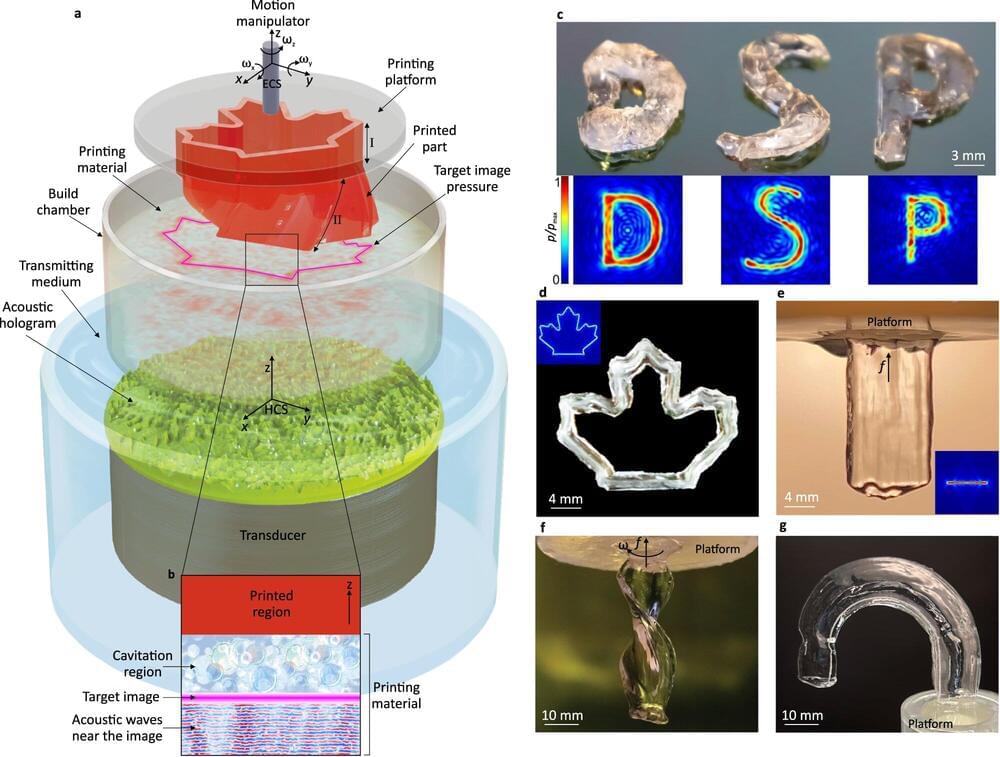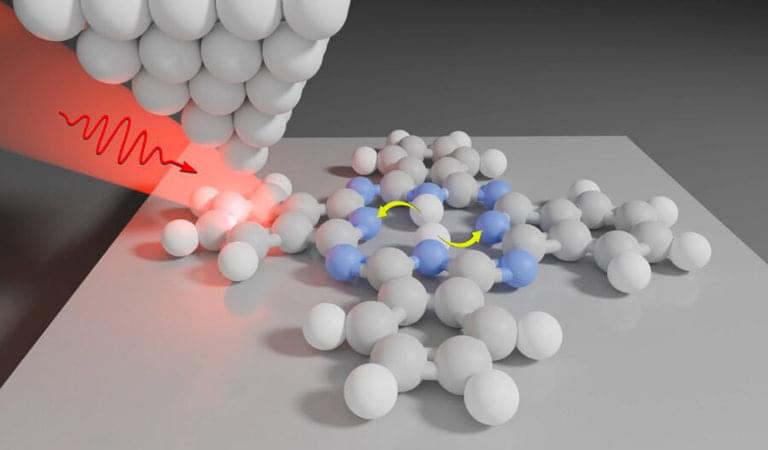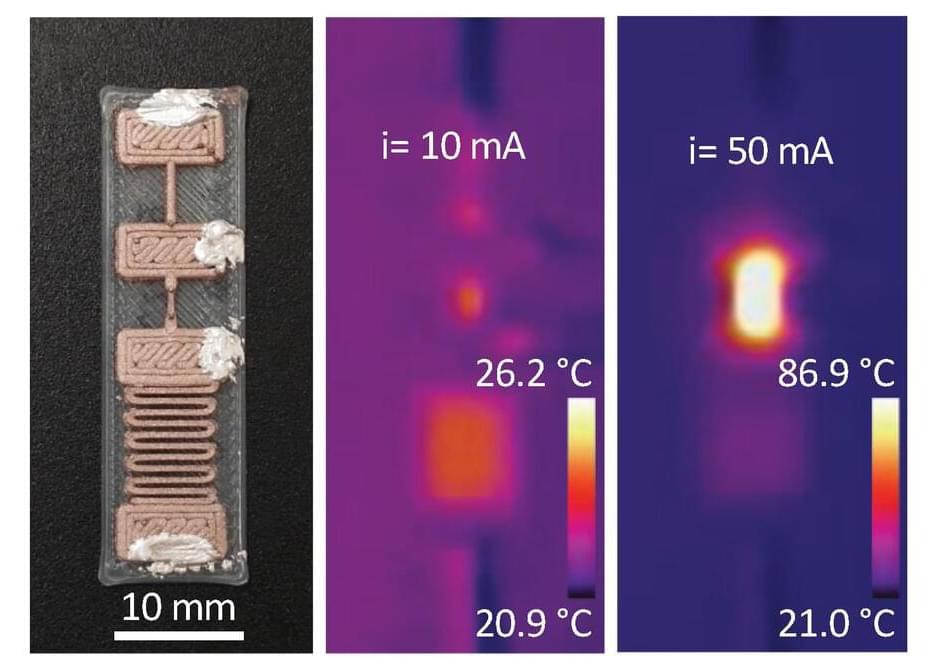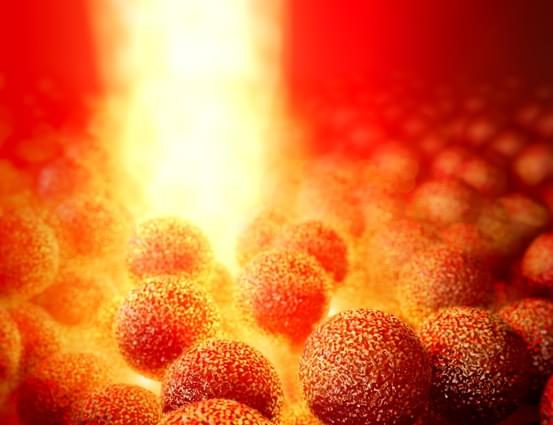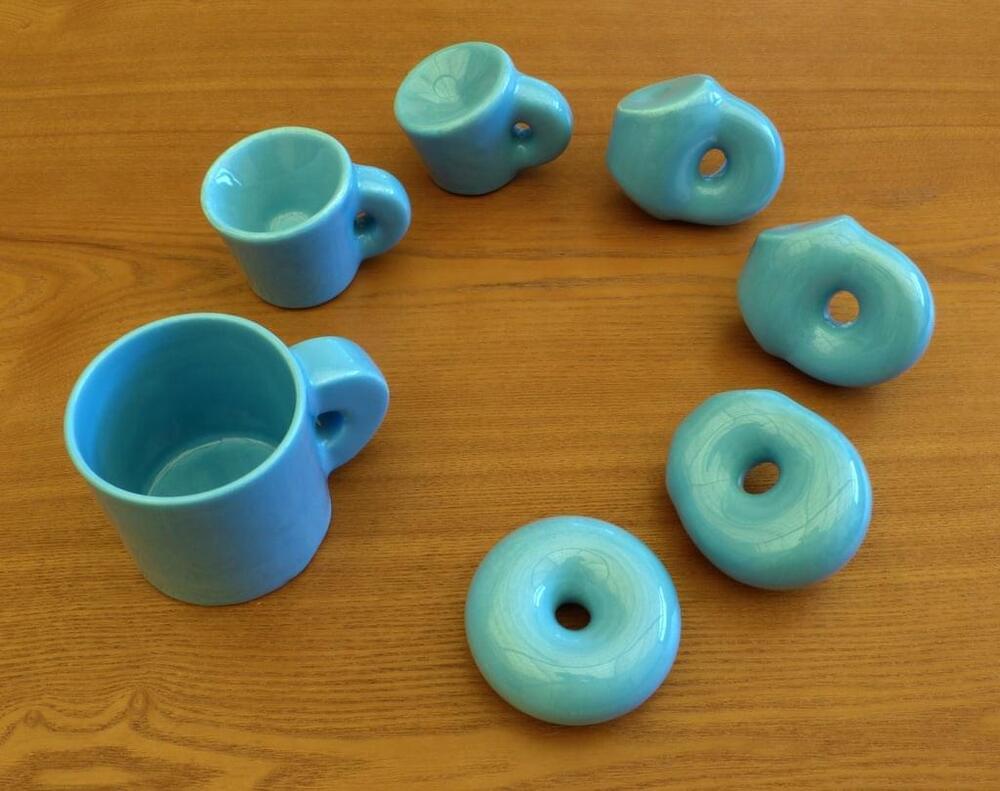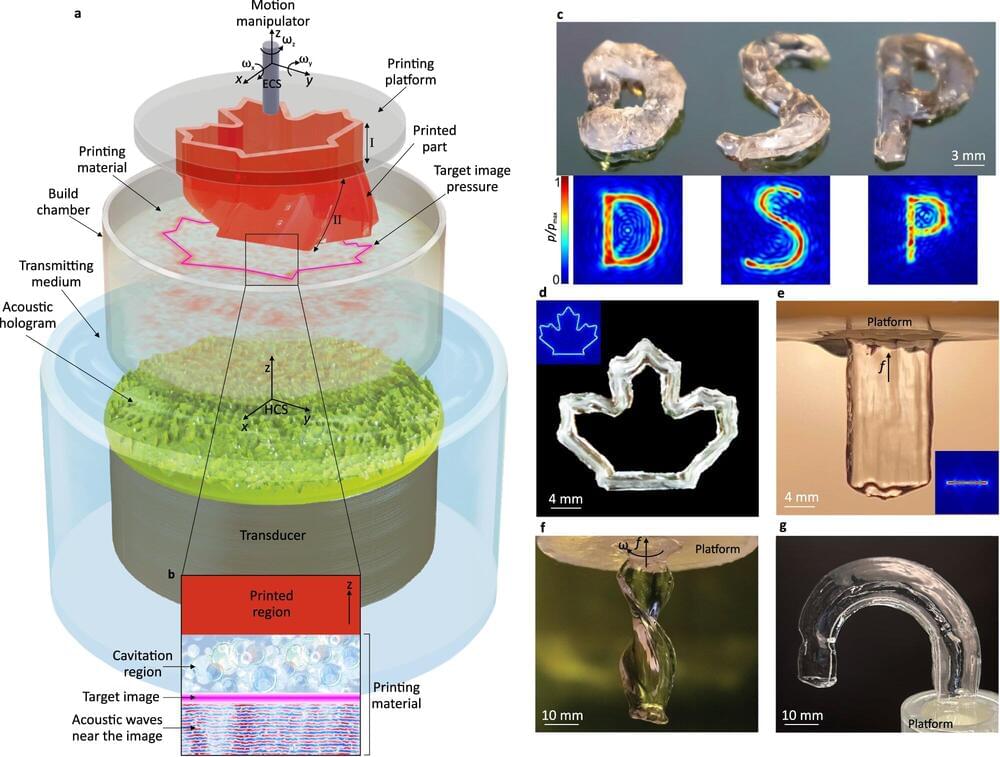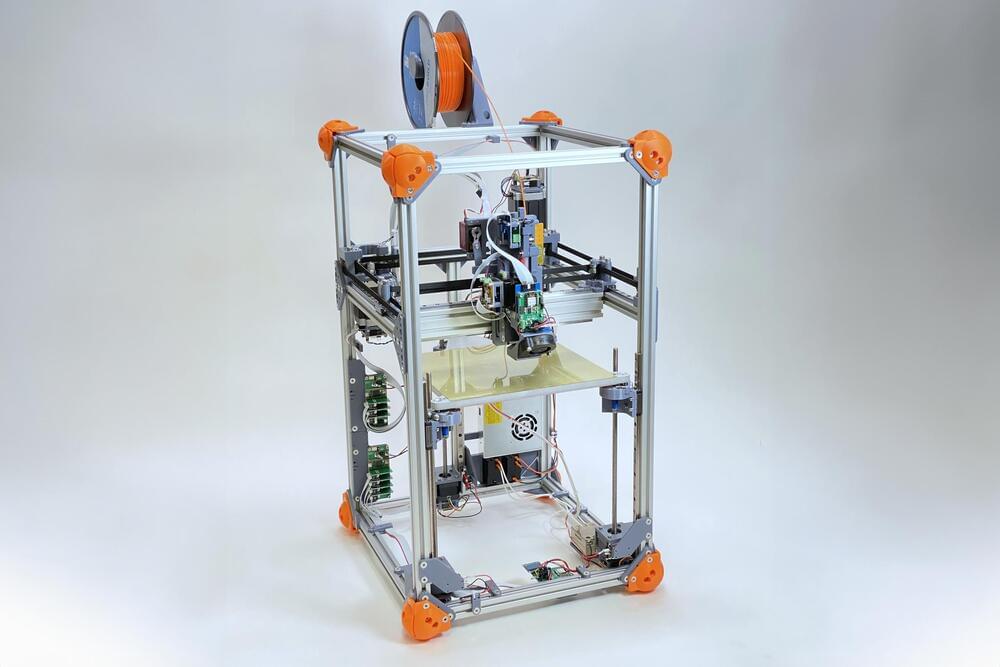Nov 1, 2024
Holographic 3D Printing has the potential to Revolutionize Multiple Industries
Posted by Natalie Chan in categories: 3D printing, chemistry, holograms
A pioneering technique shows how sound can be used to create entire objects quickly and at once. Researchers at Concordia have developed a novel method of 3D printing that uses acoustic holograms. And they say it’s quicker than existing methods and capable of making more complex objects.
The process, called holographic direct sound printing (HDSP), is described in a recent article in the journal Nature Communications. It builds on a method introduced in 2022 that described how sonochemical reactions in microscopic cavitations regions — tiny bubbles — create extremely high temperatures and pressure for trillionths of a second to harden resin into complex patterns.
Now, by embedding the technique in acoustic holograms that contain cross-sectional images of a particular design, polymerization occurs much more quickly. It can create objects simultaneously rather than voxel-by-voxel.
